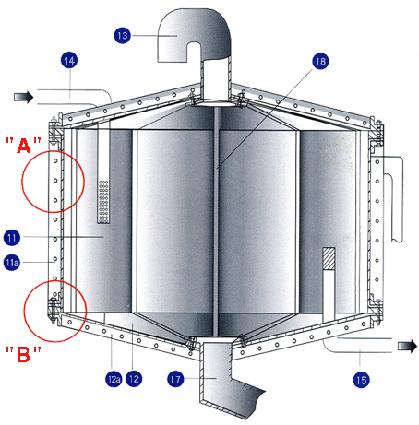

DESIGN ASPECTS OF THE RESERVOIRS
-
1.Number of Storage Reservoirs
Urban water systems should have at least one elevated tank for each of the areas. Two tanks (or a tank with two compartments) are desirable to improve reliability and pump control during times when one tank is out of service for inspection, cleaning, painting, or other maintenance. The height of an elevated tank determines the maximum water pressure available in the part of the distribution system connected to the tank. The town is divided into number of zones with independent storage reservoirs to facilitate effective and equitable water distribution.
-
2.Location of the Reservoirs
The location of the storage reservoir is of importance for regulating the pressure in the water distribution system. The storage reservoir is generally located at the highest point and as far as possible at the centre of the distribution area.
The topography of a water distribution area is an important consideration in system design and type of storage facilities to be incorporated into a water supply system. In some cases, ground-level storage systems can be sited at higher elevations (on hills), allowing for gravity supply to all or portions of a distribution area or pressure zone. Storage tanks at higher elevation can also take advantage of topographic features to reduce height requirements of ERs and provide wider pressure zone coverage.
-
3.Elevation of the Storage Reservoir
In order to maintain the minimum residual pressure in the distribution system, the elevation of the L.W.L of the storage reservoir should be fixed consistent with the provision of economic sizes of pipes in the distribution network. The LWL of the storage reservoir is fixed considering the following aspects.
-
The minimum residual pressure to be maintained in the distribution system,
-
The G.L at the farthest point in the distribution system and its distance from the service reservoir,
-
The G.L at the highest elevation in the distribution system other than the location of the service reservoir; and
-
The approximate loss of head due to friction over the distance to the farthest point from the reservoir.
The LWL of the service reservoir should be greatest of the following:
-
G.L at the farthest point plus minimum residual pressure to be maintained plus the frictional loss in the pipeline between service reservoir and the farthest point; or
-
G.L at the highest elevation in the distribution zone plus minimum residual pressure plus the frictional loss in the pipeline between service reservoir and the location of the highest elevation.
The staging height is the difference in elevation between the LWL of the service reservoir and the GL of the location of the service reservoir.
One Response to “DESIGN ASPECTS OF THE RESERVOIRS”
Leave a Reply







 LIKE TO GET UPDATES
LIKE TO GET UPDATES  TO GET EXPERT GUIDE
TO GET EXPERT GUIDE
Does Reservoir requires Elevation ?
How to determine the elevation is required or not? If the reservoir evacuation requirements, especially on large streams, may govern the size and elevation , What should be the Elevation?
Please specify size of Reservior and Size of Elevation?